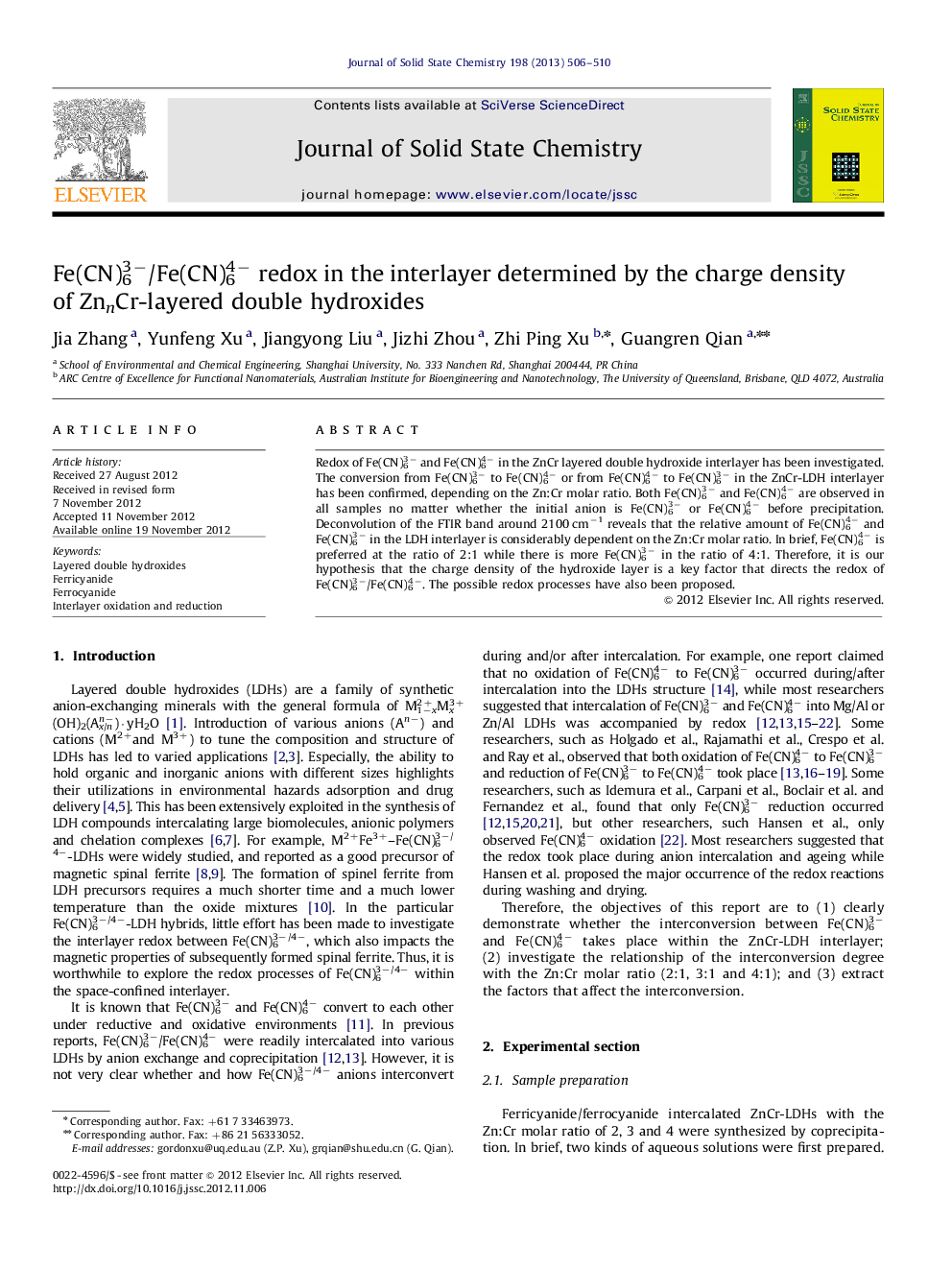| کد مقاله | کد نشریه | سال انتشار | مقاله انگلیسی | نسخه تمام متن |
|---|---|---|---|---|
| 1331422 | 1500118 | 2013 | 5 صفحه PDF | دانلود رایگان |

Redox of Fe(CN)63− and Fe(CN)64− in the ZnCr layered double hydroxide interlayer has been investigated. The conversion from Fe(CN)63− to Fe(CN)64− or from Fe(CN)64− to Fe(CN)63− in the ZnCr-LDH interlayer has been confirmed, depending on the Zn:Cr molar ratio. Both Fe(CN)63− and Fe(CN)64− are observed in all samples no matter whether the initial anion is Fe(CN)63− or Fe(CN)64− before precipitation. Deconvolution of the FTIR band around 2100 cm−1 reveals that the relative amount of Fe(CN)64− and Fe(CN)63− in the LDH interlayer is considerably dependent on the Zn:Cr molar ratio. In brief, Fe(CN)64− is preferred at the ratio of 2:1 while there is more Fe(CN)63− in the ratio of 4:1. Therefore, it is our hypothesis that the charge density of the hydroxide layer is a key factor that directs the redox of Fe(CN)63−/Fe(CN)64−. The possible redox processes have also been proposed.
Redox reactions of Fe(CN)63− and Fe(CN)64− take place in the ZnCr layered double hydroxide (LDH) interlayer, which are reflected by Fe(CN)63−/Fe(CN)64− FTIR area ratio.Figure optionsDownload as PowerPoint slideHighlights
► An interlayer redox phenomena was observed in Fe(CN)63/4− intercalated ZnCr-LDHs.
► The ratio of interlayer redox was examined by FTIR fitting analysis.
► The tendency of redox was influenced by Zn:Cr molar ratio.
► The mechanism relies on the charge density of metal hydroxyl layer.
Journal: Journal of Solid State Chemistry - Volume 198, February 2013, Pages 506–510